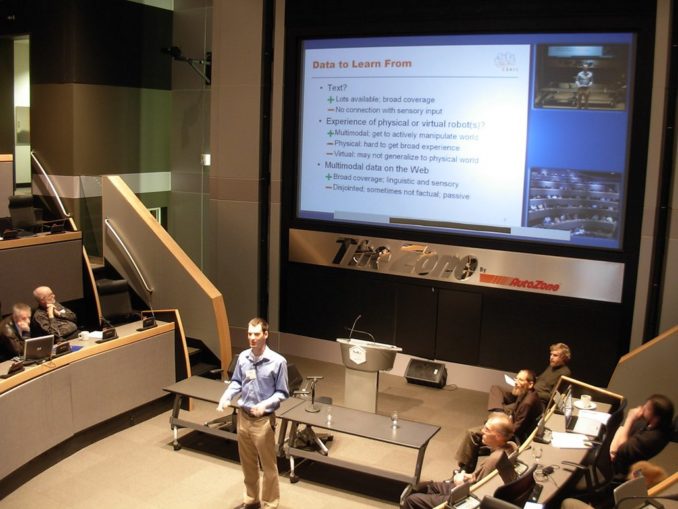
On August 18th 2024, Mr Stephen Chamberlain was “fatally struck” by a car whilst he was out on an early morning jog in Cambridgeshire. Chamberlain was put on life support after being taken to hospital, but sadly died the following Monday. That same Monday, a freak waterspout sunk a superyacht off the coast of Sicily. The yacht was owned by the wife of Mr Michael Lynch, who in the past has been described as “Britain’s Bill Gates” (although with no apparent connection to Jeffrey Epstein or Big Pharma). Lynch was one of the 22 people who were on board the yacht & it has since been confirmed that his body was found by divers search the submerged wreck for survivors.
But what connects these two individuals who died on the exact same day, on opposite sides of Europe?
Only months before, Chamberlain and Lynch had just been acquitted in one of the biggest ever US fraud cases. The three month trial concerned the sale of their company Autonomy to Hewlett-Packard (HP) in 2011. The deal saw HP pay $11.7 billion for the company before $8.8 billion was written off the next year and legal proceedings pursued. HP claimed that Autonomy’s team had fraudulently inflated the value of the company whilst Autonomy claimed HP’s team had undertaken sloppy due diligence.
Autonomy’s products sound like a wet dream for intelligence agencies. It’s software platform can process and analyse large volumes of unstructured data – in emails, social media and videos – to find patterns, trends and relevant information. Less well reported is the pair’s involvement in a British cyber-security company called Darktrace. This company uses machine learning to “build an intrinsic “pattern of life” for every network, device and user within an organisation”. It uses this information to defend against zero-day attacks, vulnerabilities that are unknown and for which no patch or fix is available. Darktrace had recently partnered with Crowdstrike, the American company blamed for the global IT outage on 19 July of this year.
A UK civil case had previously found on behalf of HP but the judge had said the company would not be receiving as much as it was hoping for. Running in parallel was a US criminal case which, if lost, would have seen Lynch and Chamberlain spending up to 25 years behind bars. Chamberlain voluntarily surrendered to the US courts with Lynch paying his legal fees but Lynch would not budge and ended up being extradited. He described being wrapped in chains and put on an extradition flight before being placed under house arrest, complete with armed guards, for over a year. Lynch refused to be ruled by convention and broke the first rule of white-collar fraud trials by taking the stand in his own defence. Defendants in US fraud cases are very rarely found not guilty, and Las Vegas bookies had him at less than 0.5% chance of winning. Nevertheless, he decided to fight (even though he had effectively lost the British case) rather than take a plea bargain with a reduced sentence. Everyone – especially HP – was subsequently extremely surprised to learn that both Lynch and Chamberlain, despite the odds, won their case and were acquitted. This was despite Autonomy’s finance chief, Sushovan Hussain, being convicted in 2018 on almost identical charges and serving five years in prison, only being released earlier this year. Speaking in interviews after the acquittal, Lynch described how the British witnesses in the case were all threatened but as Brits “we don’t fold”… “probably because we don’t understand the consequences in the way an American would”. He also said “had this gone the wrong way, it would have been the end of my life as I have known it in any sense. It’s bizarre, but now you have a second life – the question is, what do you want to do with it?”
To celebrate this ‘second life’, eleven guests were invited to a ‘freedom party’ on board Lynch’s yacht called ‘Bayesian’. On board was Lynch, his wife and daughter, Chris Morvillo (Clifford Chance lawyer defending Lynch) and his wife, Ayla Ronald (Clifford Chance lawyer), and her partner. Charlotte Golunski (partner at Invoke Capital, one of Lynch’s law firms), her partner and her one-year-old baby and lawyer Jonathan Bloomer and his wife. Bloomer who was chairman of investment bank Morgan Stanley and chairman of insurance provider Hiscox, provided key evidence as a defence witness during the trial. Also on board were 10 crew members, nine of whom survived the sudden sinking. In total, 15 out of the 22 on board survived and police have now confirmed that they have identified the bodies of Lynch, his daughter, Jonathan and Judy Bloomer and Chris and Neda Morvillo.
Some may read the above information with suspicion. They may think that Lynch and Chamberlain were taken out in some kind of revenge spree. Or perhaps they might think that fearing for their lives, they faked their own deaths. Others may speculate about their connections with the intelligence services or the fact that Lynch vowed to fund an attempt to remove the asymmetries of the US/UK extradition treaty. Of course, it’s not nice to speculate when people have died but it is hard not to when the circumstances are so suspicious. Others will argue that these events are entirely coincidental. After all, runners sadly do die all the time and whilst rare, yachts can capsize during freak storms. Remember the boat that sunk “in a matter of 30 seconds after an apocalypse descended” on Lake Maggiore last year, killing some of the 13 Italian and 8 Israeli security agents on board – coincidentally all there to celebrate a birthday. These things do habben.
So perhaps the best way to decide whether Lynch’s and Chamberlain’s deaths were a coincidence or not is to use Bayesian analysis. After all, Lynch’s wealth and success came from using Bayesian analysis in his products, so much so that he named his boat ‘Bayesian’. Bayesian theory, named after English statistician Thomas Bayes, is a statistical approach that updates the probabilities of a hypothesis as new evidence or information becomes available. It combines prior beliefs or knowledge with new data to form a revised probability. Inputting all the information above, ChatGPT, was asked to conduct a Bayesian analysis with two hypotheses. Firstly that the deaths were purely coincidental and secondly that some kind of foul play was involved. There was a high probability that the deaths were a coincidence because most deaths are due to natural or accidental causes. However, it is quite rare for two people to die by coincidence within such a short period. The selective survival of the crew, coupled with the high-profile nature of the case mean that there are likely to be significant doubts about the official explanation of the vessel sinking. Moreover, the context and the high-profile nature of the case only adds to the suspicion.
So.
A posterior probability calculation (https://en.wikipedia.org/
 |
The result of 98.2% indicates a very high likelihood that the deaths were not coincidental and were likely connected to foul play. ChatGPT concluded that “it is almost certain that the deaths of Lynch and Chamberlain were not coincidental but rather the result of deliberate actions likely linked to the high-stakes fraud case. This scenario warrants a deep and thorough investigation into the causes and circumstances surrounding these deaths”.
We await with interest the official report on the whys & wherefores of the sinking of the Bayesian, but at this stage your correspondent can report that the involvement of Epstein, Shergar, & My Noble Lord Lucan can probably be ruled out. Time to fire up Scully & Mulder?

Featured image: Sfischer, CC BY-SA 4.0, via Wikimedia Commons
© DJM 2024



